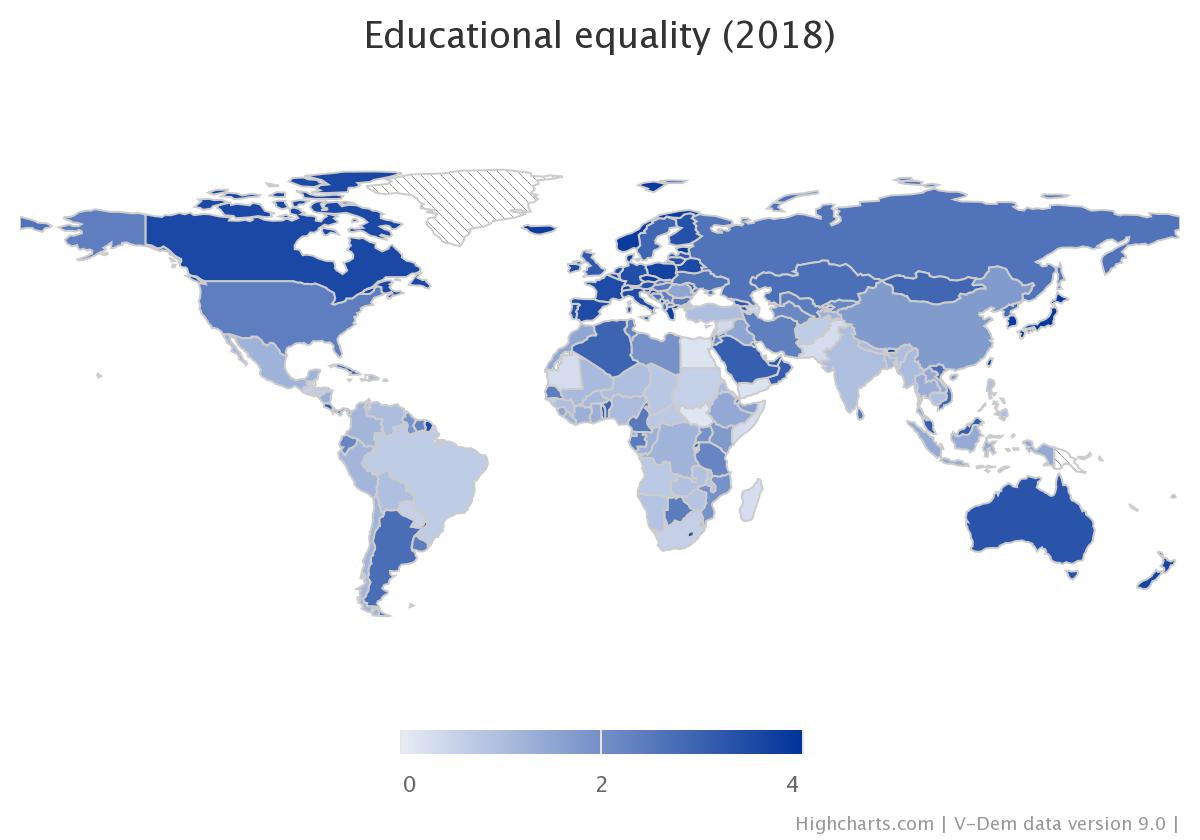International Day of Women and Girls in Science
By: Lydia Finzel
Feb 20, 2020
February 11th marked the United Nations’ International Day of Women and Girls in Science. Merely 30% of the world’s researchers are women. This reflects gaps in educational opportunities for women and girls. Equality in education is important to achieve the Sustainable Development Goals 4 and 5, but also for sustainable development in all areas of an individual’s life. This week’s graphs offer a closer look on how educational equality has changed over the last 100 years.
Educational equality is measured as basic education between the age of 6 to 16 years offered to all. The variable ranges from extremely unequal basic education (=0) to equal basic education (=4), where less than five percent of children receive low-quality education. Equality of education is thereby based on gender and on socio-economic preconditions. It is necessary for a democratic system to enable adult citizens to perform basic rights. In addition, research shows that early childhood education influences future life chances for women and men.
The V-Dem’s interactive mapping tools enable an illustrative comparison. Within the last hundred years, equality in basic education has increased substantially. In 1918, most states worldwide possessed extremely unequal to somewhat equal conditions for basic education. Only Australia, New Zealand, Argentina, Uruguay, Japan, Iceland and some European states such as Estonia, France, and Switzerland provided a relatively equal basic education.
If you want to learn more about country and indicator variables, visit v-dem.net for more detailed analyses.


